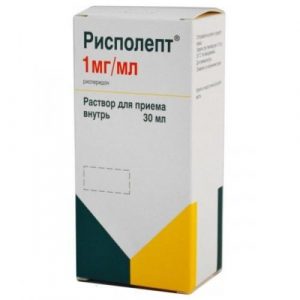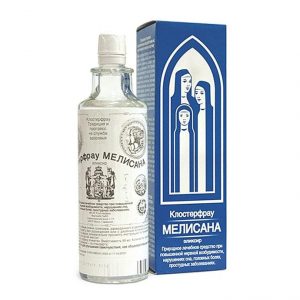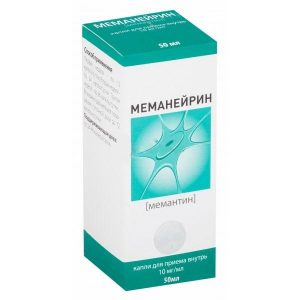Description
Packing
28 pcs.
Pharmacological action
Ziprex has an antipsychotic effect.
Pharmacodynamics
Olanzapine is an antipsychotic (antipsychotic) with a wide pharmacological spectrum of effects on a number of receptor systems.
In preclinical studies, the affinity of olanzapine for serotonin 5-HT2A / C, 5HT3, 5HT6 dopamine D1, D2, D3, D4, D5 muscarinic M1-5 adrenergic 1 and histamine H1 receptors. In animal experiments, the presence of antagonism of olanzapine with respect to 5HT, dopamine and cholinergic receptors was revealed.
In vitro and in vivo olanzapine has a more pronounced affinity and activity for serotonin 5HT2 receptors compared to dopamine D2 receptors. According to electrophysiological studies, olanzapine selectively reduces the excitability of mesolimbic (A 10) dopaminergic neurons, and at the same time has an insignificant effect on striatal (A9) neural pathways involved in the regulation of motor functions. Olanzapine reduces the conditioned protective reflex (a test characterizing antipsychotic activity) at doses lower than the doses that cause catalepsy (disorder, reflecting side effects on motor function). Unlike other antipsychotics, olanzapine enhances the anti-anxiety effect during the anxiolytic test.
Olanzapine provides a statistically significant reduction in both productive (delirium, hallucinations, etc.) and negative disorders.
Pharmacokinetics
Well absorbed, Cmax in plasma after 5 8 hours. Metabolized in the liver (via conjugation and oxidation pathways) to inactive metabolites. The main metabolite – 10-N-glucuronide – does not pass through the BBB. The average T1 / 2 varies (depending on age and gender) within 21 54 hours.
Indications
The acute form of schizophrenia and other psychoses, accompanied by pronounced positive (delirium, hallucinations, thinking disorders, hostility, suspiciousness) and / or negative (dull affect, emotional and social fencing, poor speech activity) symptoms.
Secondary affective symptoms against schizophrenia and related disorders.
Contraindications
Hypersensitivity.
Use during pregnancy and lactation
Due to insufficient experience with the use of olanzapine during pregnancy, the drug should be prescribed during pregnancy only if if the potential benefit to the patient significantly exceeds the potential risk to the fetus. Patients should be warned that in the event of pregnancy or planning pregnancy during treatment with olanzapine, they need to inform their doctor.
The study found that olanzapine is excreted in breast milk. The average dosage received by the child (mg / kg) upon reaching the equilibrium concentration in the mother was 1.8% of the mother’s olanzapine dose (mg / kg). Breastfeeding during olanzapine therapy is not recommended.
Special instructions
Malignant antipsychotic syndrome. Malignant antipsychotic syndrome (ZNS) can develop during treatment with any antipsychotics, including olanzapine. Clinical manifestations of malignant antipsychotic syndrome include a significant increase in body temperature, rigidity of the muscles,lowering, tachycardia, arrhythmias, increased sweating). Additional symptoms may include an increase in creatinine phosphokinase levels, myoglobinuria (rhabdomyolysis), and acute renal failure. Clinical manifestations of malignant antipsychotic syndrome or a significant increase in body temperature without other symptoms of malignant antipsychotic syndrome require the abolition of all antipsychotics, including olanzapine.
tardive dyskinesia. In comparative studies lasting more than 6 weeks, treatment with olanzapine was significantly less often accompanied by the development of dyskinesia, which requires medical correction, than the use of haloperidol. However, the risk of tardive dyskinesia with prolonged antipsychotic therapy should be considered. With the development of signs of tardive dyskinesia, a dose reduction or withdrawal of olanzapine is recommended. Symptoms of tardive dyskinesia may increase or manifest after discontinuation of the drug.
Experience in elderly patients with psychotic disorders (delirium, hallucinations) against a background of dementia. Cerebrovascular adverse events (e.g., stroke, transient ischemic attack), including deaths, have been reported in studies of olanzapine in elderly patients with psychotic disorders with dementia. Placebo-controlled studies showed a higher incidence of cerebrovascular adverse events in patients in the olanzapine group compared to the placebo group (1.3% versus 0.4%, respectively).
All patients with cerebrovascular disorders had previous risk factors for cerebrovascular adverse events (e.g. the previously noted case of cerebrovascular adverse events or transient ischemic attacks, arterial hypertension, smoking), as well as concomitant diseases and / or medications associated with cerebrovascular adverse events.
The efficacy of olanzapine in elderly patients with psychotic disorders in the setting of dementia has not been established. In this category of patients, in the placebo-controlled clinical trials, the mortality rate in the olanzapine group was higher than in the placebo group (3.5%) versus 1.5%, respectively). The main risk factors for increased mortality for this group of patients treated with olanzapine are age> 80 years, sedation, combined use with benzodiazepines or the presence of lung pathology (for example, pneumonia with or without aspiration).
There is insufficient data to establish differences in the incidence of cerebrovascular disorders and / or mortality (compared with placebo), and in risk factors in this group of patients when taking olanzapine orally and intramuscularly. Olanzapine is not recommended for the treatment of patients with psychotic disorders against the background of dementia.
Impaired liver function. In some cases, taking olanzapine, usually in the early stages of therapy, was accompanied by a transient, asymptomatic increase in hepatic transaminases (aspartate aminotransferase and alanine aminotransferase) in the blood serum. Rare cases of hepatitis have been reported. In very rare cases, hepatic cholestasis and other mixed liver damage were noted. Particular caution is necessary when increasing the levels of aspartate aminotransferase and / or alanine aminotransferase in the blood serum. In case of increasing indicators of aspartate aminotransferase and / or alanine aminotransferase during treatment with olanzapine, careful monitoring of the patient is required and, if necessary, a dose reduction.
Hyperglycemia and diabetes. There is a higher prevalence of diabetes in patients with schizophrenia. As with some other antipsychotic medications, cases of hyperglycemia, diabetes mellitus, exacerbation of pre-existing diabetes mellitus, ketoacidosis and diabetic coma have been very rare. A causal relationship between antipsychotic drugs and these conditions has not been established. Careful clinical monitoring of patients with diabetes and patients with risk factors for diabetes is recommended.
Epileptic seizures. Olanzapine should be used with caution in patients with a history of epileptic seizures or exposed to factors that reduce the seizure threshold. In these patients, convulsive seizures were rarely observed with olanzapine treatment.
Hematologic changes. As with other antipsychotics, caution should be exercised in olanzapine therapy in patients with a reduced number of leukocytes and / or neutrophils in the peripheral blood, due to various reasons with signs of inhibition or toxic impairment of bone marrow function under the influence of drugs with a history of inhibition of bone marrow function , due to concomitant disease, radiotherapy or chemotherapy in the history of hypereosinophilia or myelitis proliferative disease. In clinical studies, the use of olanzapine in patients with clozapine-dependent neutropenia or agranulocytosis in history was not accompanied by relapses of these disorders.
Anticholinergic activity. In clinical trials, olanzapine therapy has rarely been accompanied by anticholinergic side effects. However, clinical experience with olanzapine in patients with concomitant diseases is limited, therefore caution is advised when prescribing olanzapine to patients with clinically significant prostatic hypertrophy, paralytic bowel obstruction, angle-closure glaucoma, and similar conditions.
Dopaminergic antagonism. Under in vitro conditions, olanzapine exhibits antagonism with respect to dopamine and, like other antipsychotic (antipsychotics) drugs, can theoretically suppress the effects of levodopa and dopamine agonists.
Total CNS activity. Given the main effect of olanzapine on the central nervous system, caution should be exercised when using olanzapine in combination with other centrally acting drugs and alcohol. Decreased blood pressure and / or bradycardia were noted during intramuscular injections of olanzapine. Patients need to be supine with drowsiness and dizziness after injection until an examination has shown that there is no decrease in blood pressure, orthostatic hypotension, bradycardia, and / or hypoventilation.
Due to the possible development of bradycardia and / or a decrease in blood pressure after intramuscular injections of olanzapine, caution should be exercised in patients with serious cardiovascular disease, in which cases of fainting or a decrease in blood pressure and / or bradycardia may lead to an increased risk to health patients. Caution should be exercised in patients receiving treatment with other drugs that can cause a decrease in blood pressure, bradycardia, and respiratory or central nervous system depression.
The combined administration of olanzapine for intramuscular injection and benzodiazepines has not been studied parenterally and is therefore not recommended. In the case when it is supposed to prescribe intramuscular olanzapine in combination with parenteral administration of benzodiazepines, A thorough assessment of the patient ² ¢s clinical condition in relation to excessive sedation and inhibition of cardiac and respiratory activity is recommended.
Effect on the ability to drive a car and other mechanical means
Patients taking olanzapine should be careful when driving mechanical means, including a car, since olanzapine can cause drowsiness.
Composition of
1 coated tablet contains: active substance: olanzapine 10 mg
Dosage and administration of
Ziprex is taken orally, regardless of food intake. The initial dose is from 10 mg / day, once. Then the daily dose may vary from 5 to 20 mg / day, depending on the clinical condition.
Side effects
Frequent (more than 10%) – drowsiness, rare (less than 10%) weight gain – dizziness, dry mouth, constipation, peripheral edema, orthostatic hypotension, akathisia, dystonia, eosinophilia (asymptomatic), a small and temporary increase in prolactin levels (gynecomastia, lactorrhea), and liver transaminases.
Drug Interactions
Olanzapine metabolism may be altered by inhibitors or inducers of cytochrome P450 isoenzymes that exhibit specific activity against CYP1A2. Olanzapine clearance is increased in smoking patients and in patients taking carbamazepine (due to an increase in CYP1A2 activity). Known potential CYP1A2 inhibitors may decrease olanzapine clearance. Olanzapine is not a potential inhibitor of CYP1A2 activity, therefore, when taking olanzapine, the pharmacokinetics of drugs such as theophylline, mainly metabolized by CYP1A2, does not change.
In clinical studies, it was shown that a single dose of olanzapine during therapy with the following drugs was not accompanied by a suppression of the metabolism of these drugs: imipramine or its metabolite desipramine (CYP2D6, CYP3A, CYP1A2), warfarin (CYP2A19), or theophylline (CYP1A4) or , CYP2C19). There were also no signs of drug interaction when using olanzapine in combination with lithium or biperidine.
Against the background of a steady concentration of olanzapine, there was no change in the pharmacokinetics of ethanol. However, ethanol intake together with olanzapine may be accompanied by an increase in the pharmacological effects of olanzapine, for example, sedation.
A single dose of aluminum- or magnesium-containing antacid or cimetidine did not interfere with the oral bioavailability of olanzapine. The combined use of activated carbon reduced the bioavailability of olanzapine when ingested to 50-60%.
Fluoxetine (60 mg once or 60 mg daily for 8 days) causes an increase in maximum concentration of olanzapine by an average of 16% and a decrease in clearance of olanzapine by an average of 16%. The degree of influence of this factor is significantly inferior to the severity of individual differences in these indicators, therefore, it is usually not recommended to change the dose of olanzapine when it is prescribed in combination with fluoxetine.
Fluvoxamine, an inhibitor of CYP1A2, decreases olanzapine clearance. The result is an average increase in Cmax of olanzapine with the administration of fluvoxamine by 54% in non-smoking women and by 77% in smoking men. The average increase in AUC of olanzapine is 52% and 108%, respectively. Small doses of olanzapine should be prescribed to patients who are receiving fluvoxamine treatment together.
In vitro studies using human liver microsomes have shown that olanzapine slightly inhibits the formation of valproate glucuronide (the main pathway of valproic acid metabolism). Valproic acid also slightly affects the metabolism of olanzapine in vitro. Therefore, a clinically significant pharmacokinetic interaction between olanzapine and valproic acid is unlikely.
Administration of lorazepam intramuscularly (2 mg) 1 hour after intramuscular injection of olanzapine (5 mg) did not significantly affect the pharmacokinetics of olanzapine, unconjugated lorazepam or total lorazepam. However, this combination of intramuscular lorazepam and intramuscular olanzapine increased the drowsiness that was observed when taking each of these drugs separately.
Decreased blood pressure and / or bradycardia were noted during intramuscular injection of olanzapine for injection. Olanzapine has an alpha-1 adrenergic antagonist activity. Caution must be exercised in patients who receive treatment with drugs that can lower blood pressure by mechanisms other than alpha-1 adrenergic antagonism.
The absorption of olanzapine is independent of food intake.
According to in vitro studies using human liver microsomes, olanzapine also showed an extremely small potential in suppressing the activity of the following cytochrome P450 isoenzymes: CYP1A2, CYP2C9, CYP2C19, CYP2D6, and CYP3A.
overdose Signs and symptoms of
Very common (frequency 10%) symptoms of olanzapine overdose were tachycardia, agitation / aggression, articulation disorder, various extrapyramidal disorders, and disorders of extrapyramidal disorder.
Other clinically relevant effects of olanzapine overdose included delirium, convulsions, malignant neuroleptic syndrome, respiratory depression, aspiration, decrease or increase in blood pressure, arrhythmia (<2% of overdose) and cardiac arrest and respiration. The minimum dose for acute overdose with lethal outcome was 450 mg, the maximum dose for overdose with favorable outcome (survival) - 1500 mg. There is no specific medical care for an overdose of There is no specific antidote for olanzapine. Vomiting is not recommended. Standard procedures for overdose (gastric lavage, administration of activated charcoal) may be indicated. Co-administration of activated carbon has shown a decrease in the bioavailability of olanzapine when taken up to 50-60%. Clinical symptomatic treatment and control of vital organ functions, including blood pressure reduction, circulatory disorders and maintenance of respiratory function. Epinephrine, dopamine, and other sympathomimetics, which are beta-adrenergic receptor agonists, should not be used, as stimulation of these receptors may exacerbate a decrease in blood pressure. Storage conditions The product should be stored in a dry, dark place at a temperature not exceeding 20 ° C. active substance Olanzapine conditions granted through pharmacies By prescription lekarstvennaja form tablets




